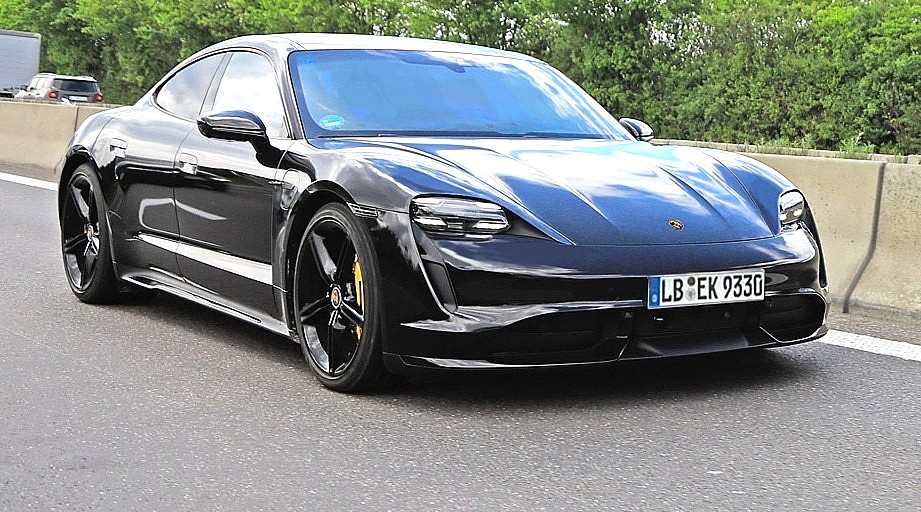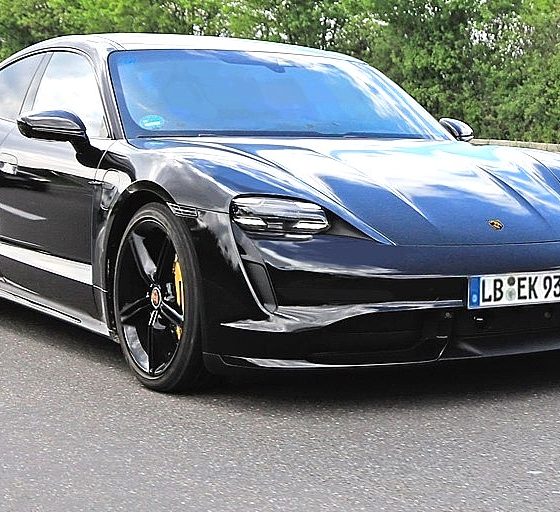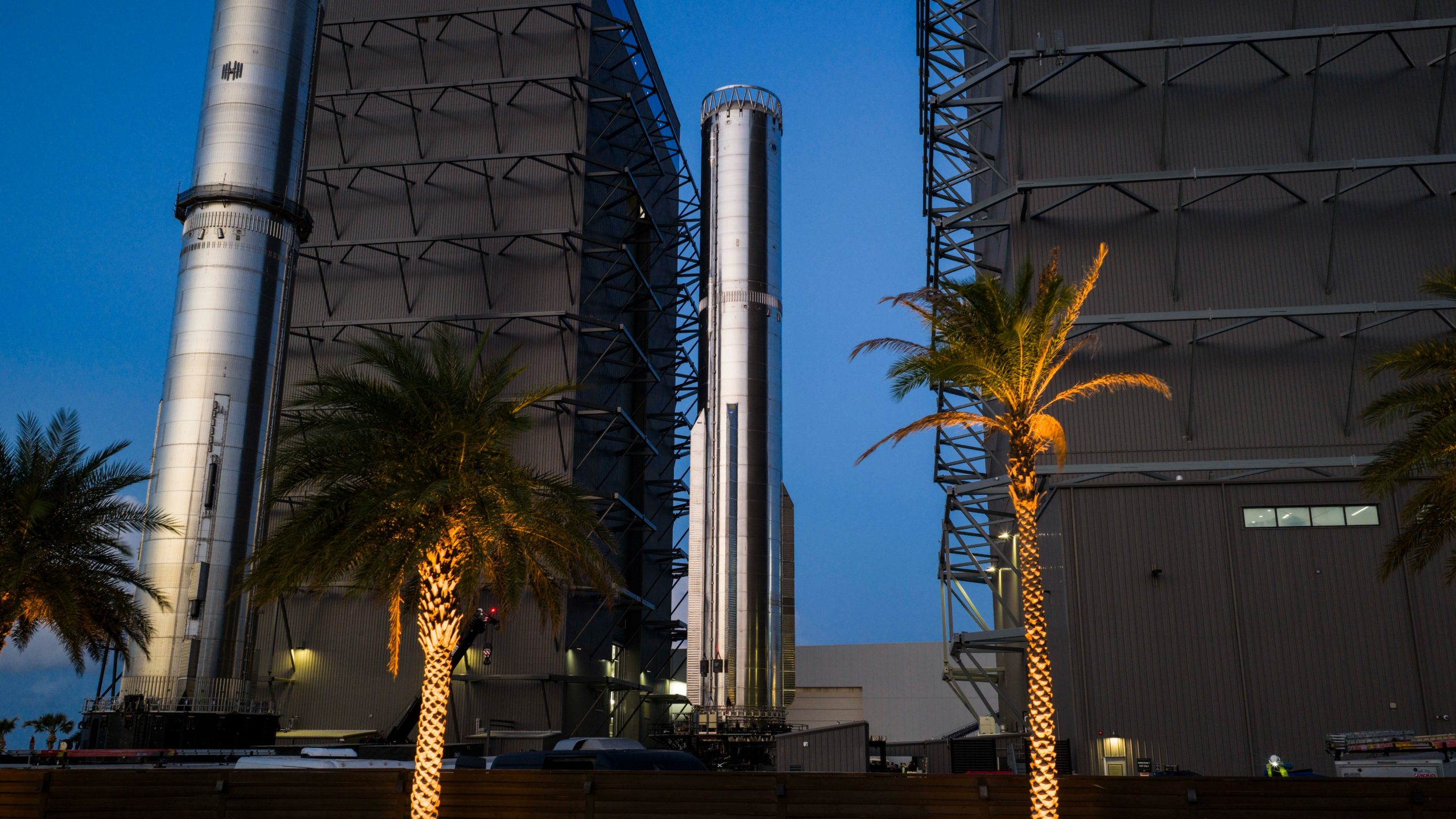

News
Porsche Taycan Turbo first ride teases production specs and price, Turbo S and RWD GTS variant
Porsche recently granted Automobile Magazine a rare test ride in the Taycan Turbo, the top-tier variant of the company’s first modern all-electric car. The test drive provided what could only be described as the closest look yet at the upcoming vehicle, and based on the impressions of the magazine; it appears that the Taycan Turbo could very well become one of Porsche’s most iconic cars yet.
Porsche designed the Taycan with the same principles as its other vehicles. It’s luxurious inside and out, it handles like a sports car, and it is quick — very, very quick. The motoring magazine highlighted this in its test ride, stating that the vehicle has a habit of pushing drivers and passengers back into their seats when it accelerates from 0-60 mph in just over 3 seconds. The publication also noted that the Taycan is more reminiscent of the Porsche 911 than Porsche’s four-door flagship, the Panamera, based on the way the car handled itself despite its weight.
While the Taycan is undeniably impressive, the test ride did raise a particular concern for the vehicle: it’s charging infrastructure, which remains a work in progress. The Taycan could be charged with up to 250 kW at an 800V charge point, but there are only a few charging stations with that output today. Even 400V stations, which can charge the Taycan at around 150 kW, are still relatively few. One can only hope that Porsche can secure the Taycan’s charging infrastructure by the time the vehicle’s production version is unveiled this coming September.

Perhaps most notable from the publication’s test drive were the details of the electric car that were revealed by the carmaker. For one, all Taycans, regardless of trim, are equipped with coated PSCB brakes, though carbon ceramic options are available. Similar to other electric vehicles, the Taycan is capable of regenerative braking as well, though the vehicle’s maximum regeneration is an impressive 250 kW. Higher-tier models also boast features like air suspension and rear-wheel steering.
Porsche is yet to fully announce the final specs of the Taycan, though a brand ambassador has confirmed the contents of a document obtained by the Automobile listing the features and specs of each Taycan version. According to the document, the base Taycan will be Rear Wheel Drive only, and it will be equipped with an 80 kWh battery pack. The base Taycan will be powered by a choice of 240-kW (322-hp) and 280-kW (375-hp) motors, and it will command a price in the low ~$90,000 range.

The vehicle’s mid-range variant, the Taycan 4S, will reportedly be equipped with a 96 kW battery pack and 320-kW (429-hp) or 360-kW (483-hp) electric motors. Pricing for the Taycan 4S will reportedly start in the high ~$90,000 range. The Taycan Turbo, which will be the vehicle’s top-of-the-line version upon its release, will reportedly feature a 96 kWh battery, a 160-kW (215-hp)/221-lb-ft motor up front, and a 300-kW (402-hp)/405-lb-ft motor at the rear. Pricing for the Taycan Turbo is expected to start at ~$140,000.
The Porsche Taycan is expected to be unveiled sometime this coming September, with the company offering the base, 4S, and Turbo versions to customers. At least two other variants of the Taycan will reportedly be unveiled later, one of which is a pretty insane 540-kW (724-hp) Turbo S version and a lighter RWD GTS trim that will most likely be incredibly fun to drive on the track. Porsche is also planning on improving its charging infrastructure in the near future, with peak charging rates for the vehicle increasing from 250 kW to 350 kW by 2021 at the latest.
The Porsche Taycan is arguably one of the most anticipated vehicles in the electric car market this year, particularly as it is one that has the potential to directly challenge the Tesla Model S in the premium EV segment. Porsche is moving full throttle to prepare for the Taycan’s production and ramp, with the company drastically upgrading its Zuffenhausen site to accommodate the manufacturing of the vehicle.

Elon Musk
SpaceX issues statement on Starship V3 Booster 18 anomaly
The incident unfolded during gas-system pressure testing at the company’s Massey facility in Starbase, Texas.

SpaceX has issued an initial statement about Starship Booster 18’s anomaly early Friday. The incident unfolded during gas-system pressure testing at the company’s Massey facility in Starbase, Texas.
SpaceX’s initial comment
As per SpaceX in a post on its official account on social media platform X, Booster 18 was undergoing gas system pressure tests when the anomaly happened. Despite the nature of the incident, the company emphasized that no propellant was loaded, no engines were installed, and personnel were kept at a safe distance from the booster, resulting in zero injuries.
“Booster 18 suffered an anomaly during gas system pressure testing that we were conducting in advance of structural proof testing. No propellant was on the vehicle, and engines were not yet installed. The teams need time to investigate before we are confident of the cause. No one was injured as we maintain a safe distance for personnel during this type of testing. The site remains clear and we are working plans to safely reenter the site,” SpaceX wrote in its post on X.
Incident and aftermath
Livestream footage from LabPadre showed Booster 18’s lower half crumpling around the liquid oxygen tank area at approximately 4:04 a.m. CT. Subsequent images posted by on-site observers revealed extensive deformation across the booster’s lower structure. Needless to say, spaceflight observers have noted that Booster 18 would likely be a complete loss due to its anomaly.
Booster 18 had rolled out only a day earlier and was one of the first vehicles in the Starship V3 program. The V3 series incorporates structural reinforcements and reliability upgrades intended to prepare Starship for rapid-reuse testing and eventual tower-catch operations. Elon Musk has been optimistic about Starship V3, previously noting on X that the spacecraft might be able to complete initial missions to Mars.
Investor's Corner
Tesla analyst maintains $500 PT, says FSD drives better than humans now
The team also met with Tesla leaders for more than an hour to discuss autonomy, chip development, and upcoming deployment plans.

Tesla (NASDAQ:TSLA) received fresh support from Piper Sandler this week after analysts toured the Fremont Factory and tested the company’s latest Full Self-Driving software. The firm reaffirmed its $500 price target, stating that FSD V14 delivered a notably smooth robotaxi demonstration and may already perform at levels comparable to, if not better than, average human drivers.
The team also met with Tesla leaders for more than an hour to discuss autonomy, chip development, and upcoming deployment plans.
Analysts highlight autonomy progress
During more than 75 minutes of focused discussions, analysts reportedly focused on FSD v14’s updates. Piper Sandler’s team pointed to meaningful strides in perception, object handling, and overall ride smoothness during the robotaxi demo.
The visit also included discussions on updates to Tesla’s in-house chip initiatives, its Optimus program, and the growth of the company’s battery storage business. Analysts noted that Tesla continues refining cost structures and capital expenditure expectations, which are key elements in future margin recovery, as noted in a Yahoo Finance report.
Analyst Alexander Potter noted that “we think FSD is a truly impressive product that is (probably) already better at driving than the average American.” This conclusion was strengthened by what he described as a “flawless robotaxi ride to the hotel.”
Street targets diverge on TSLA
While Piper Sandler stands by its $500 target, it is not the highest estimate on the Street. Wedbush, for one, has a $600 per share price target for TSLA stock.
Other institutions have also weighed in on TSLA stock as of late. HSBC reiterated a Reduce rating with a $131 target, citing a gap between earnings fundamentals and the company’s market value. By contrast, TD Cowen maintained a Buy rating and a $509 target, pointing to strong autonomous driving demonstrations in Austin and the pace of software-driven improvements.
Stifel analysts also lifted their price target for Tesla to $508 per share over the company’s ongoing robotaxi and FSD programs.
Elon Musk
SpaceX Starship Version 3 booster crumples in early testing
Photos of the incident’s aftermath suggest that Booster 18 will likely be retired.

SpaceX’s new Starship first-stage booster, Booster 18, suffered major damage early Friday during its first round of testing in Starbase, Texas, just one day after rolling out of the factory.
Based on videos of the incident, the lower section of the rocket booster appeared to crumple during a pressurization test. Photos of the incident’s aftermath suggest that Booster 18 will likely be retired.
Booster test failure
SpaceX began structural and propellant-system verification tests on Booster 18 Thursday night at the Massey’s Test Site, only a few miles from Starbase’s production facilities, as noted in an Ars Technica report. At 4:04 a.m. CT on Friday, a livestream from LabPadre Space captured the booster’s lower half experiencing a sudden destructive event around its liquid oxygen tank section. Post-incident images, shared on X by @StarshipGazer, showed notable deformation in the booster’s lower structure.
Neither SpaceX nor Elon Musk had commented as of Friday morning, but the vehicle’s condition suggests it is likely a complete loss. This is quite unfortunate, as Booster 18 is already part of the Starship V3 program, which includes design fixes and upgrades intended to improve reliability. While SpaceX maintains a rather rapid Starship production line in Starbase, Booster 18 was generally expected to validate the improvements implemented in the V3 program.
Tight deadlines
SpaceX needs Starship boosters and upper stages to begin demonstrating rapid reuse, tower catches, and early operational Starlink missions over the next two years. More critically, NASA’s Artemis program depends on an on-orbit refueling test in the second half of 2026, a requirement for the vehicle’s expected crewed lunar landing around 2028.
While SpaceX is known for diagnosing failures quickly and returning to testing at unmatched speed, losing the newest-generation booster at the very start of its campaign highlights the immense challenge involved in scaling Starship into a reliable, high-cadence launch system. SpaceX, however, is known for getting things done quickly, so it would not be a surprise if the company manages to figure out what happened to Booster 18 in the near future.








